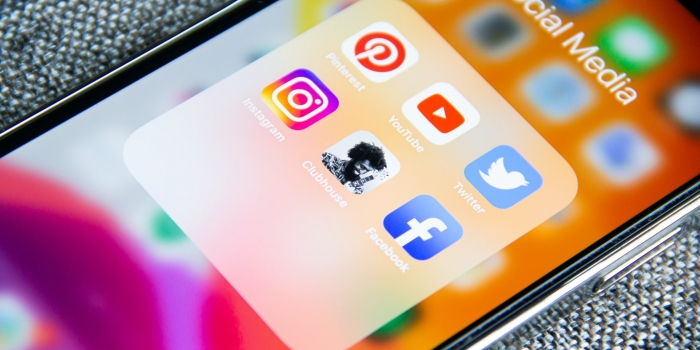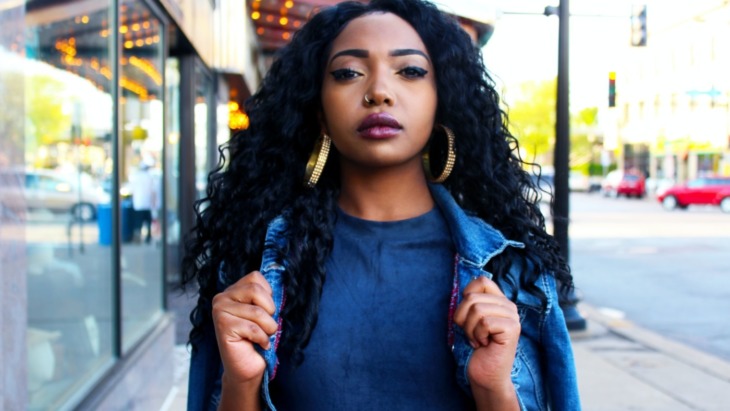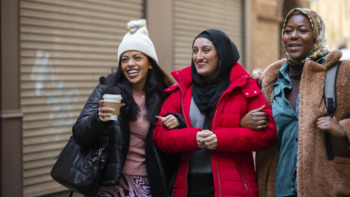Check out the highlights from our session with FASHIONPHILE during last month’s YMS:Online USA.
As part of YMS:Online USA last month, we were thrilled to join luxury recommerce brand, FASHIONPHILE, and trend forecaster, Stylus for our exclusive session on ‘Rethinking Retail to Fuel Gen Z’s love of shopping’.
In the session, the panel shared their thoughts on new trends, social media marketing, the evolution of social commerce and more. Here are some of the highlights:
Uncovering Gen Z shopping habits during the pandemic
It’s fair to say that the pandemic has spurred a change in shopping habits over the last 18 months. During lockdown, online shopping was our only real window into the retail world. Unsurprisingly, living through periods of social isolation and restrictions has caused a surge in pent-up demand among college students in recent months, which both Student Beans and FASHIONPHILE have picked up on.
“We were coincidentally designed at the beginning to service our customers primarily online, originally from the comfort of their homes, now from the safety of their homes,” comments Lauren Leger, Head of Marketing Communications, at FASHIONPHILE. “And we saw record sales numbers. I think people were looking for a little retail therapy and ‘pick me up’ during the pandemic. It’s worth mentioning that luxury is an investment really coming into people’s minds – and I know that Gen Z is very money forward and aware. They’re a generation that’s definitely looking to get more bang for their buck, and you can see from the way that the items we sell are priced that they retain their value. So, as all of these other more traditional markets are looking more volatile, the price of the Chanel bag has only gone up and up and up during the pandemic.”

“I think we can all say it’s been an interesting time to say the least,” adds Ryan. “What we did see, similar to what Lauren was saying, is our fashion, health and beauty brands – and all our partners there – really helped make us almost operate business as usual even without some of our other partners live on the site. Obviously we are very online driven and online focused as a business, so we were really able to help our brands shift from that in-store marketing idea to do a little bit more online; whether that be through affiliate networks, through online advertising, socials – things like that.”
Deconstructing Gen Z’s values: sustainability vs fast fashion
As Lauren points out, more and more young consumers are investing in luxury fashion – choosing quality that will last longer and thus be more sustainable. For FASHIONPHILE, this makes Gen Z a big target market, because they are a consumer group that wants to invest more in pre-owned, high quality products.
“I think when anyone thinks of pre-owned, whether it’s ultra luxury accessories or clothing from a thrift store, you think sustainability,” says Lauren. “Gen Z is a generation who cares about sustainability and they are really putting their money where their mouth is. They let that drive their purchasing decisions. We did a sustainability report about where luxury falls into this lifecycle of any accessory, and a luxury bag is actually 200% less likely to end up in a landfill than its counterpart. I think that is something to speak to when you’re making those purchasing decisions – especially for Gen Z.”

But there is a tension between Gen Zs’ desire for sustainability versus affordability, ease and the speed of fast fashion in particular. Throughout the pandemic, both trends have been prominent according to student shopping habits. Ryan explains: “Some of the brands in the fashion sector that we’ve seen do well are Topshop, Gymshark, Nasty Gal, Lulu’s and True Religion – a wide variety that may not be considered luxury but also not really considered fast fashion. So, we saw this thing called a ‘lipstick effect’, which goes back to the Great Depression where people weren’t necessarily going out and buying fur and expensive jackets, but they would go out and buy lipstick or beauty products to dress themselves up to feel better. It feeds into the whole look good, feel good mentality – where you’re spending a little bit more but maybe spending more on quantity as opposed to quality. But then there is also that internal conflict where young people do want to be more sustainable and they do want to have more timeless pieces, and that’s where we see some of the higher end brands come in.”
Ryan adds that offering a monetary or percentage discount helps bridge the gap between sustainability and affordability – all while making Gen Zs feel more comfortable with converting from browsers to buyers.
Gen Z trends: the importance of social media
When connecting with students, social media marketing is a must. Gen Zs have never known a world without the internet, so speaking their digital vocabulary is the first step in gaining loyal customers. Student Beans works with brands to create Gen Z-centric content that is engaging, relatable and authentic. Ryans tells us more:
“Social media is a really good place to generally talk about what it’s like to be in school and similar topics that really resonate with Gen Z,” he explains. “We’ve recently done some work with PrettyLittleThing in the UK, showing off their new clothing haul, what you can mix and match, and more. We’ve learnt that this demographic in particular is way more likely to share this kind of content with their friends if it’s from a fellow peer. So on TikTok, we want to make sure that it’s all peer-driven. We do in fact have on our roadmap for later this year in Q4 a lot of work with brand ambassadors – we will be working with nano-influencers to really hit that authentic aspect.”

Lauren agrees that authenticity is important when marketing on social media. “Social media in general is where we can be our most authentic self as a business, as a company – and use our most personal brand voice,” she adds. “TikTok, Instagram, Instagram reels, they’re no-brainers. The things that we are selling on our website are stunning pieces of art – well crafted, instantly recognizable. But sometimes that isn’t quite enough, and so we’ve seen the most success by pulling back the curtain so to speak, and showing consumers our behind the scenes happenings – whether it’s an educational campaign about our authentication practices, or every different size of Chanel flap, but also doing these storytelling pieces around each of these heritage brands. Clubhouse is interesting because we can’t necessarily show products but we do get to show off our thought leadership about what makes authentication so unique, special, something worth learning.”
Social commerce – an evolving trend
Social commerce is booming right now, and it’s increasing brand involvement. Stylus’ Rebecca Hobbs refers to L’oreal’s recent partnership with TikTok on its pilot commerce feature as an example. But, as we progress into a new world with COVID-19, how exactly will we see this trend develop down the line?
“I truly think that within the upcoming months and years, almost every single brand is going to be doing social commerce in some way, shape or form,” comments Ryan. “Using Instagram as an example, I think it would be really interesting to see if Instagram has some type of partnership in place with brands like Afterpay, Klarna, Honey – maybe even Student Beans (one can dream!). I do think that there will be a lot of cross-app integration and that every single brand is going to at least have some type of focus on some type of commerce. It might not be their entire catalogue, but maybe a new launch, sale items – things of that nature.”
Lauren agrees that social commerce is going to “ramp up” by the end of this year. She adds that partnerships in this space are going to need that authentic aspect in order to make an impression on Gen Z, in a similar vein to social media marketing.
“Gone are the days where you can just send people things and have them unbox it – especially with Gen Z,” she adds. “They grew up with the internet, it is inherent, they know when something is sponsored, they know when somebody is pushing a product versus actually having experienced it.”

The future of retail: IRL versus URL
The future of shopping is at a pivotal moment, Rebecca points out. Ecommerce skyrocketed during the pandemic, but we’ve still found that Gen Zs do still value in-store shopping. For big shopping events like Cyber Week, for example, our insights reveal that 62% of 16-24s enjoy a mix of both in-store and online shopping. As we emerge from the pandemic, Ryan touches on how online habits and IRL habits will balance out.
“We’ve seen a ton of pent-up demand with this demographic in general, so they are definitely dying to get out to the store which is not a bad thing,” says Ryan. “But I do feel that perhaps one of the things that may happen is there will be more in-store exclusives, and online exclusives – there could be more things like ‘this product is exclusive to instore of vice versa online, so it is really going to get people going into store to access something that maybe you’ve seen online and then vice versa as well.”
Want to see where we’re off to next? Check out our dedicated events page to view our upcoming events, including YMS London this September. Plus, gain access to exclusive webinar content featuring a raft of brands, speakers and expert panels.














